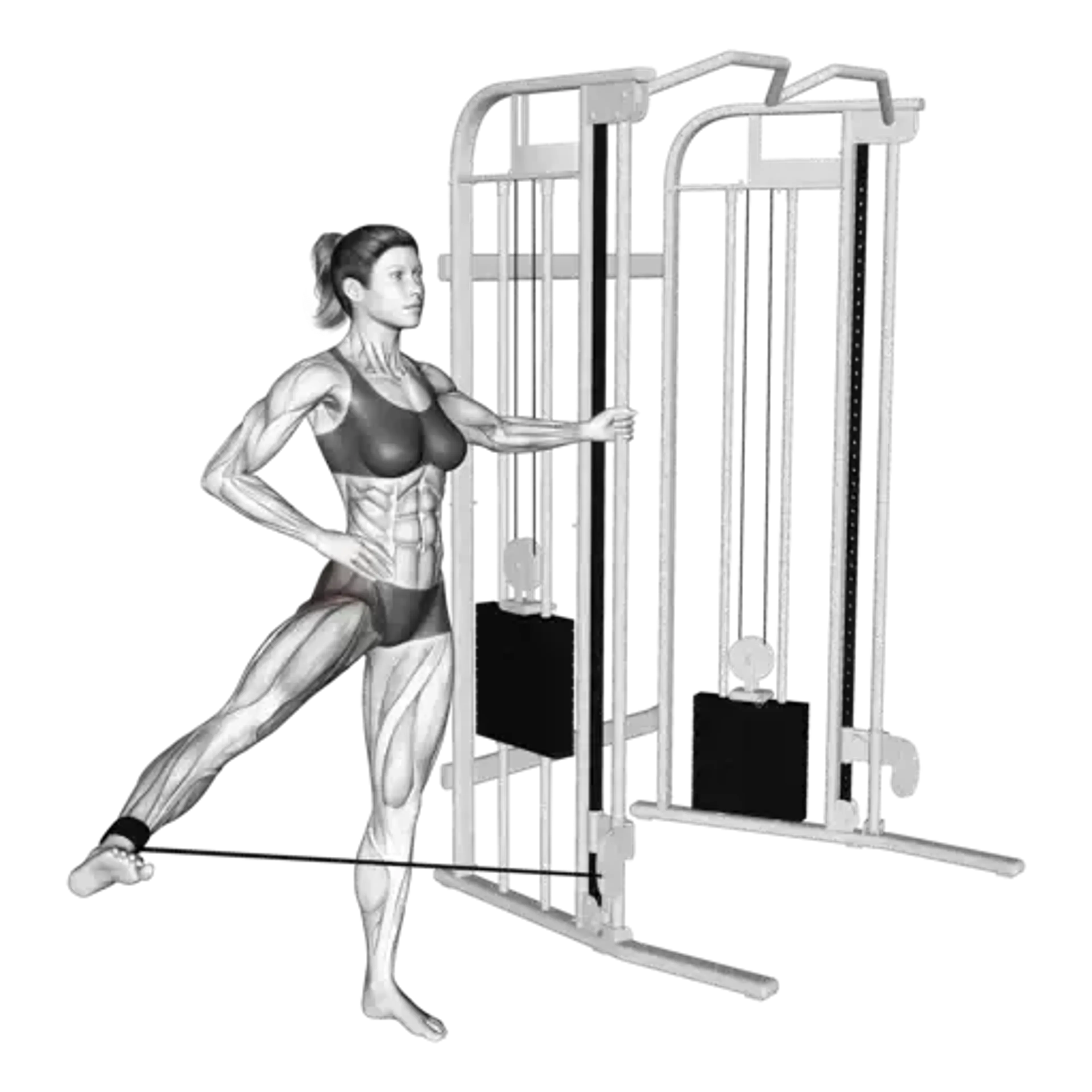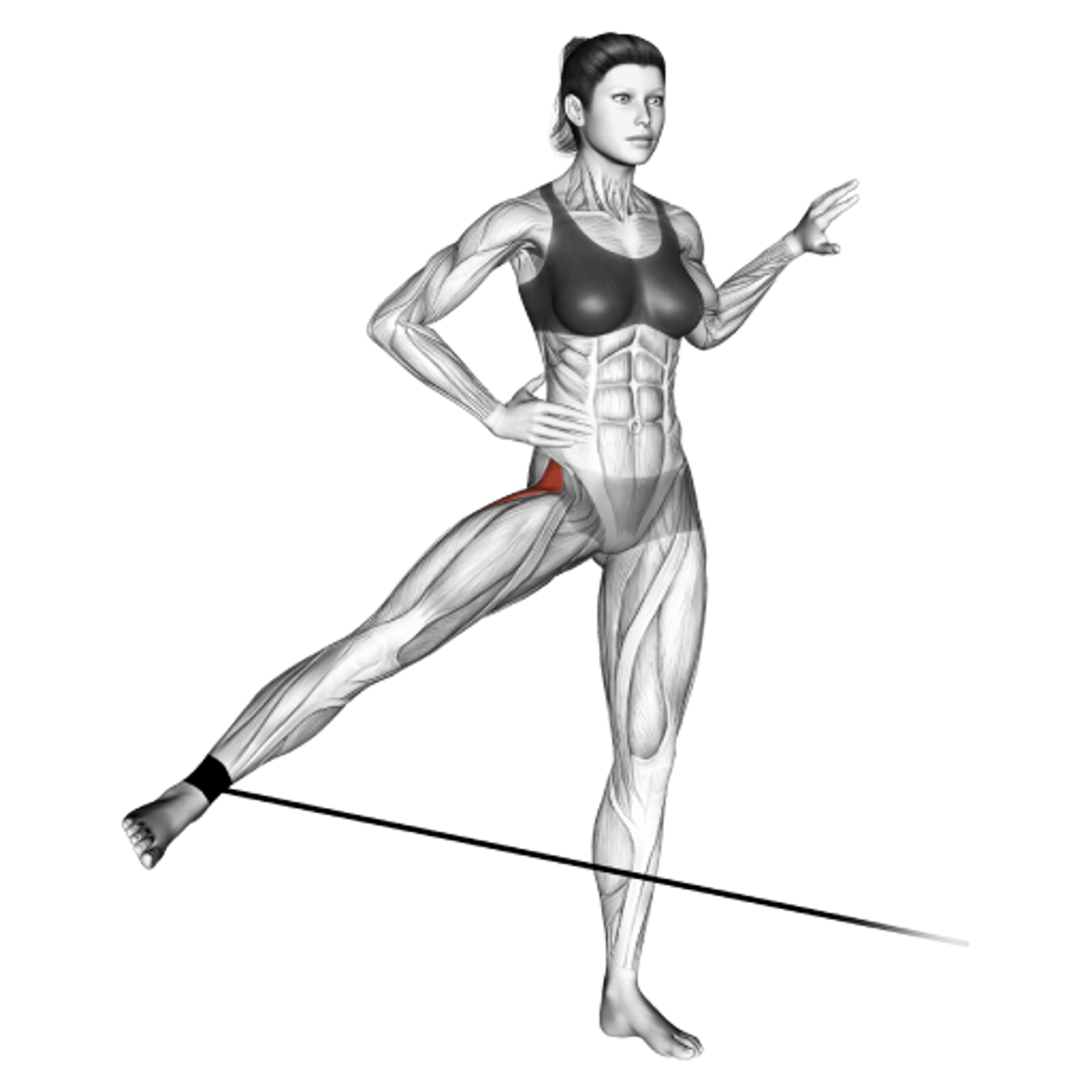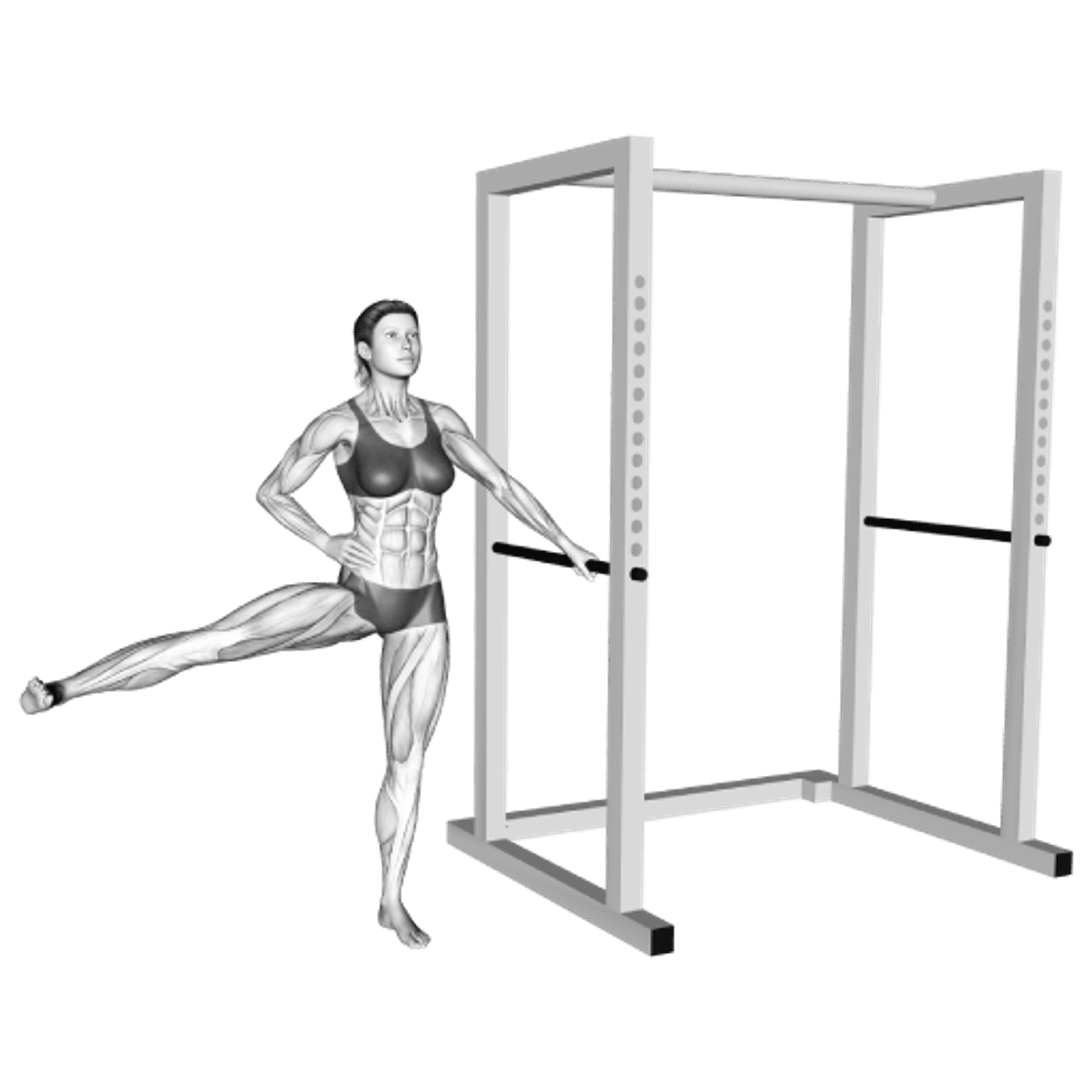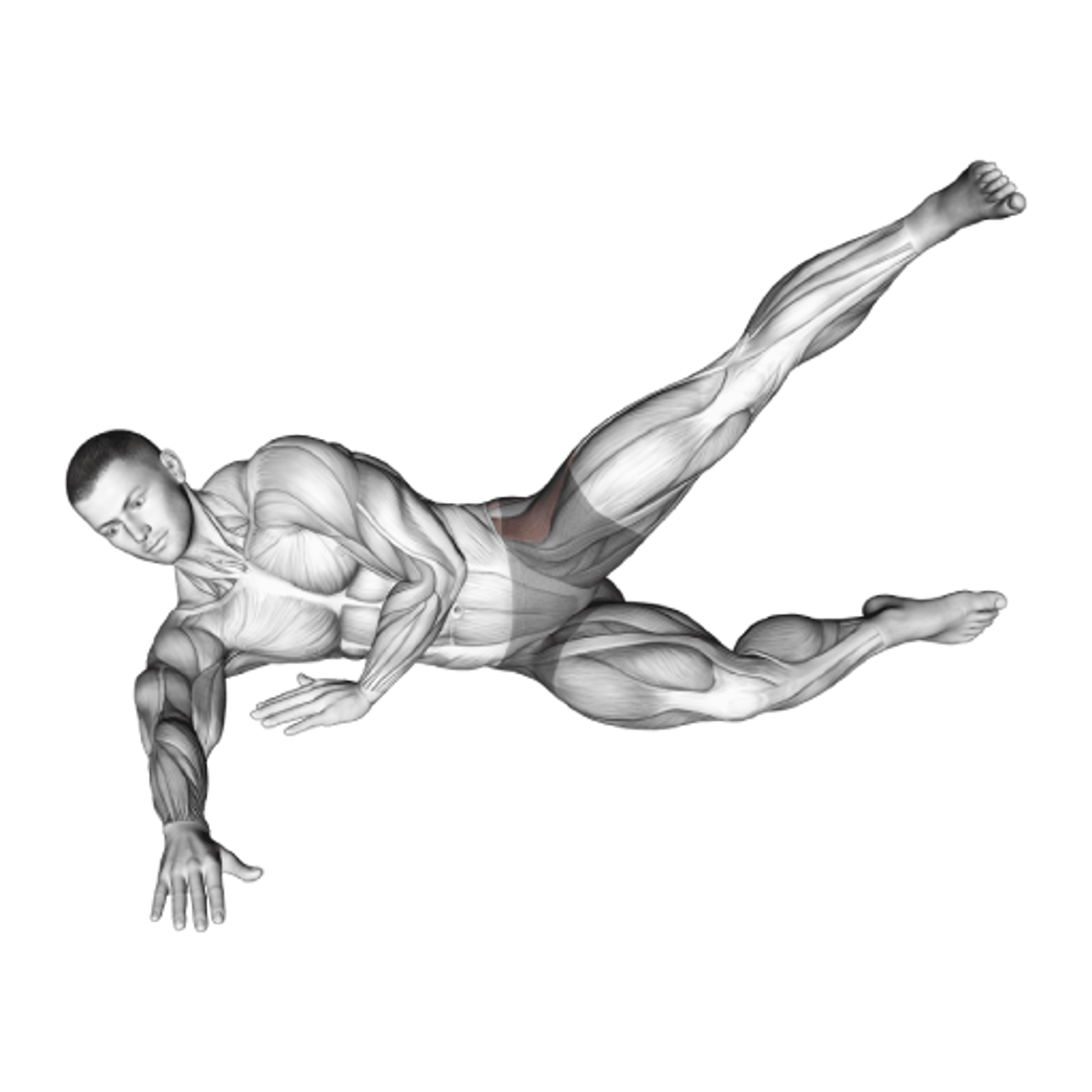Side Bridge Hip Abduction

Overview
- Primary Focus:
- Glutes.
- Equipment:
- Body weight.
- Difficulty:
- Beginner.
General Information
Side Bridge Hip Abduction is a compound exercise that primarily targets the glutes and also engages the core and outer thighs. It is a beginner-level movement that blends lateral hip abduction with a side bridge to build lateral hip strength and trunk stability.
This drill works well at home or in the gym because it requires no equipment and minimal space. It’s useful as a warm-up, activation set, or accessory for improving hip stability, especially before squats, deadlifts, or running sessions.
The side bridge position emphasizes the glute medius and deep core as you resist hip drop and rotation. The abduction of the top leg biases the outer hip while the isometric hold sharpens control. Choose this variation when you want more trunk demand than a simple Side Hip Abduction or Clamshell.
Expect a strong lateral hip burn and a clear sense of pelvis staying level. Keep reps smooth with brief pauses to reinforce position and avoid swinging the leg for momentum.
Muscles Worked
- Gluteus Medius
- Primary
- Gluteus Minimus
- High
- External Oblique
- Medium
- Gluteus Maximus
- Medium
- Tensor Fasciae Latae
- Medium
- Rectus Abdominis
- Minimal
- Rectus Abdominis (Lower)
- Minimal
Instructions
- Lie on your side with your forearm under your shoulder, legs straight, and feet stacked.
- Press the forearm down and lift your hips into a straight side-bridge line from head to heels.
- Brace your core and keep your pelvis level; avoid rotating toward the floor or ceiling.
- With the top leg straight and toes slightly turned down, lift the leg away from the bottom leg in controlled abduction.
- Pause briefly at the top while keeping hips stacked and ribs down; feel the outer hip working.
- Lower the top leg under control without letting the bridge sag or the pelvis twist.
- Complete the target reps, then switch sides and repeat.
Common Mistakes
Injuries
Side Bridge Hip Abduction is a low risk exercise when performed with proper technique.
Common strain points include the shoulder on the support side and the outer hip. Keep the elbow under the shoulder, brace the core, and use a shorter range if you feel pinching in the hip or lower back.
Regress by bending the knees or performing the abduction without the bridge. Progress by slowing the tempo or adding a brief isometric hold at the top of each rep.
Stop if you experience sharp hip or shoulder pain, and resume with reduced range, fewer reps, or an easier variation.
Alternative Exercises

Frequently Asked Questions
- Q: How high should I lift the top leg?
Lift only as high as you can keep the pelvis level and ribs down - usually a small, controlled range.
- Q: How many reps should I do?
Start with 8-12 controlled reps per side for 2-3 sets, focusing on quality and position.
- Q: What if my shoulder hurts in the side bridge?
Stack the elbow under the shoulder and grip the floor. If discomfort persists, bend the knees or perform the abduction without the bridge.
- Q: When should I use this in a workout?
Use early in the session as activation or between compound sets to reinforce hip and trunk stability without heavy fatigue.
Overview
- Primary Focus:
- Glutes.
- Equipment:
- Body weight.
- Difficulty:
- Beginner.




